Oracle
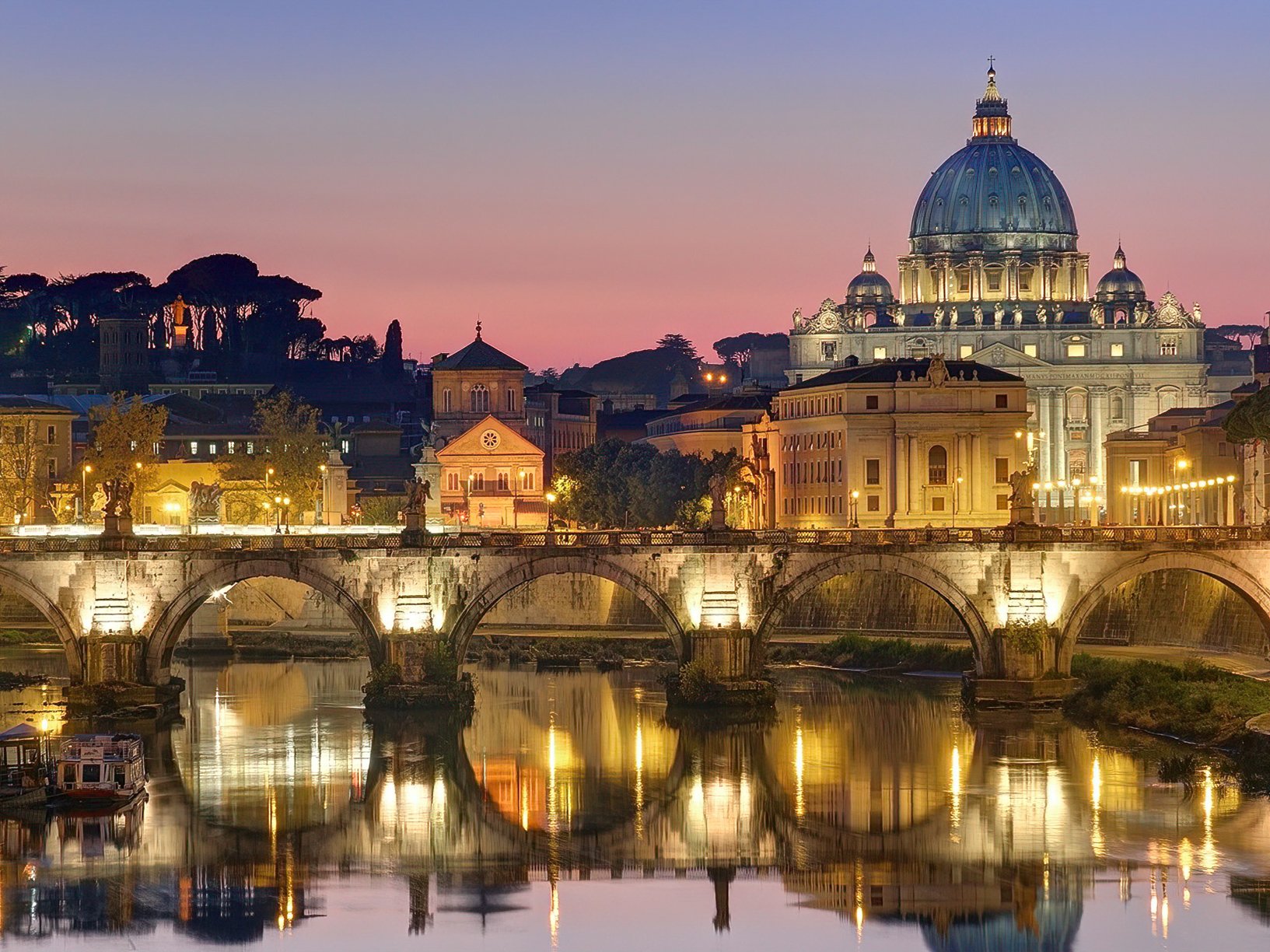
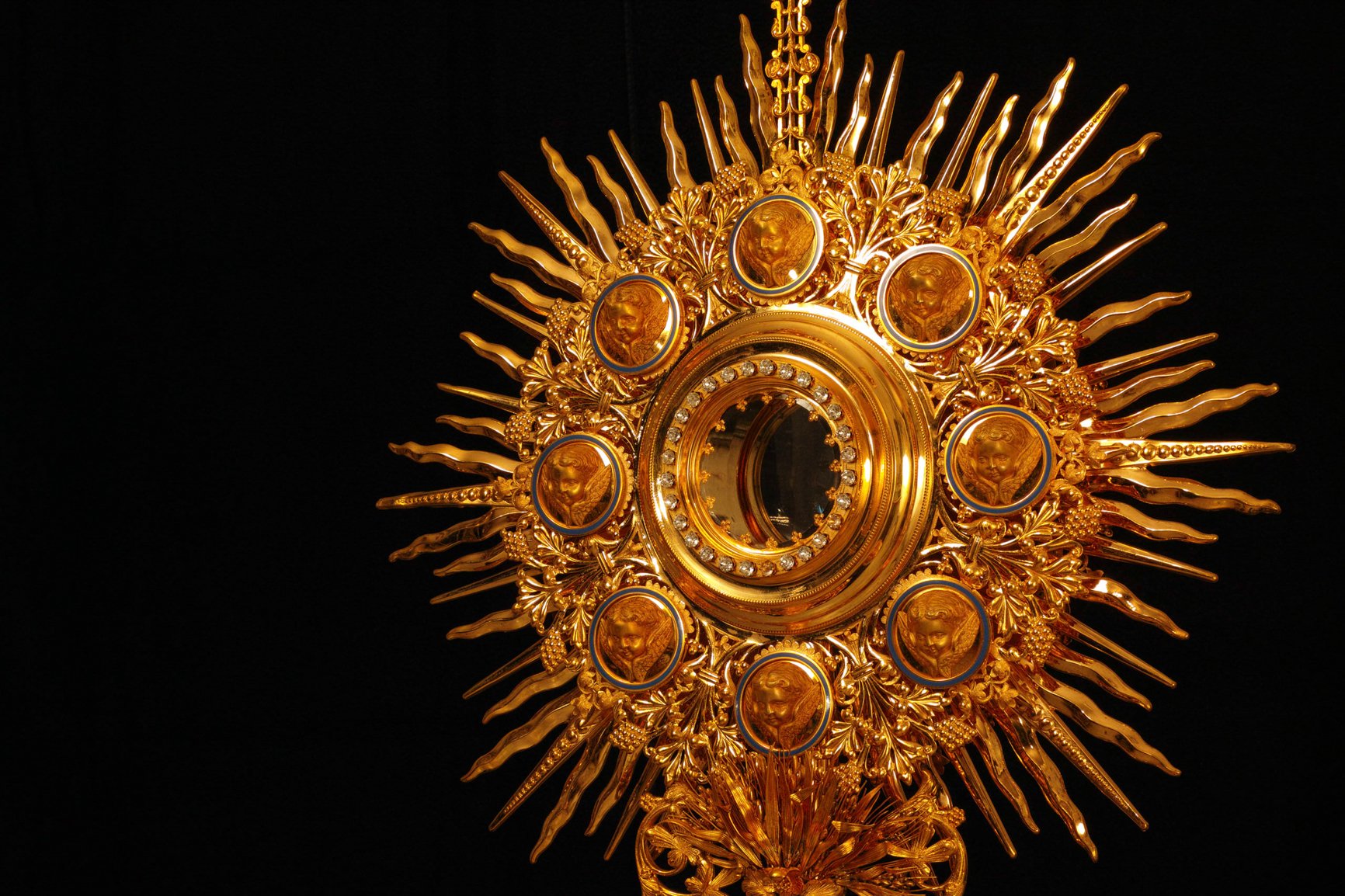
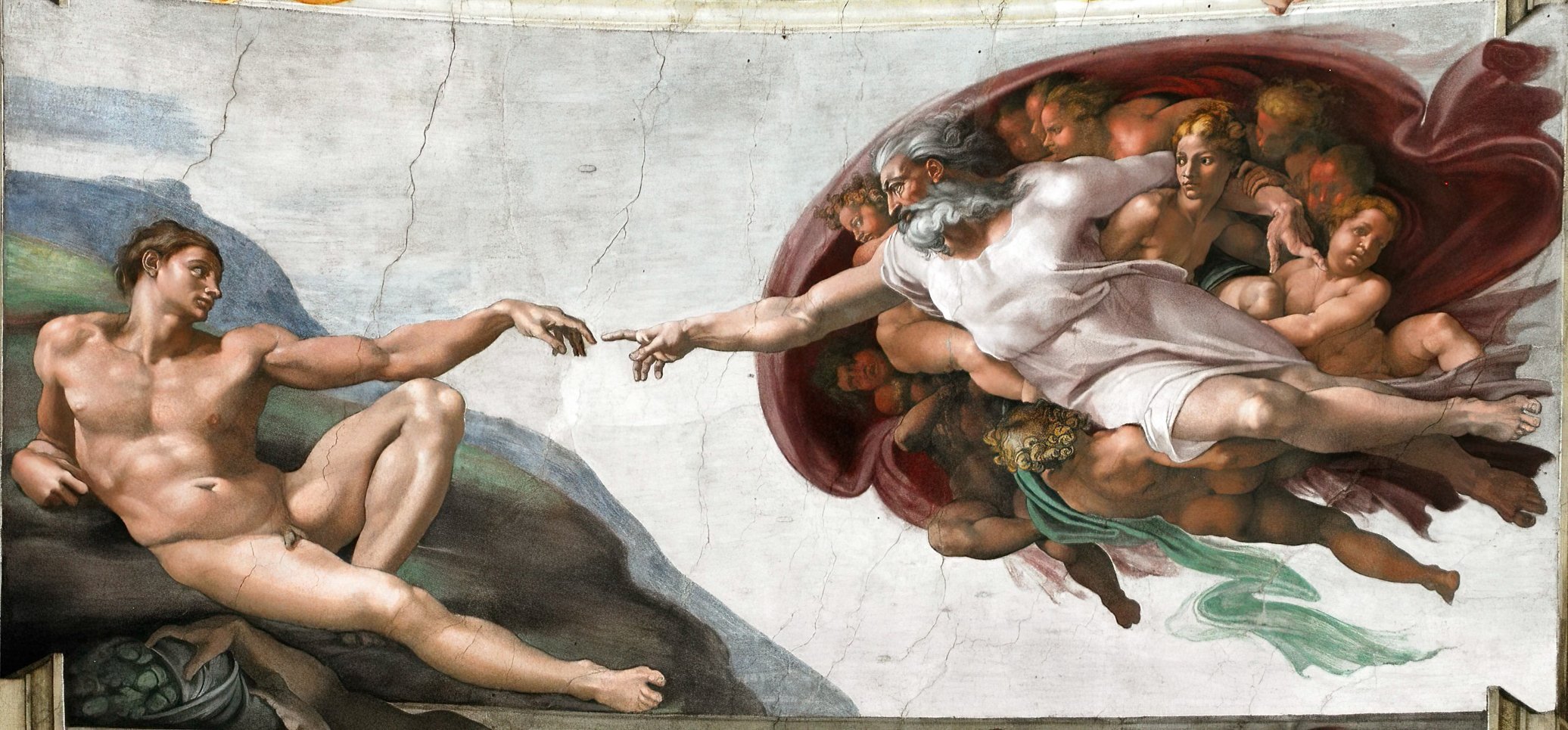
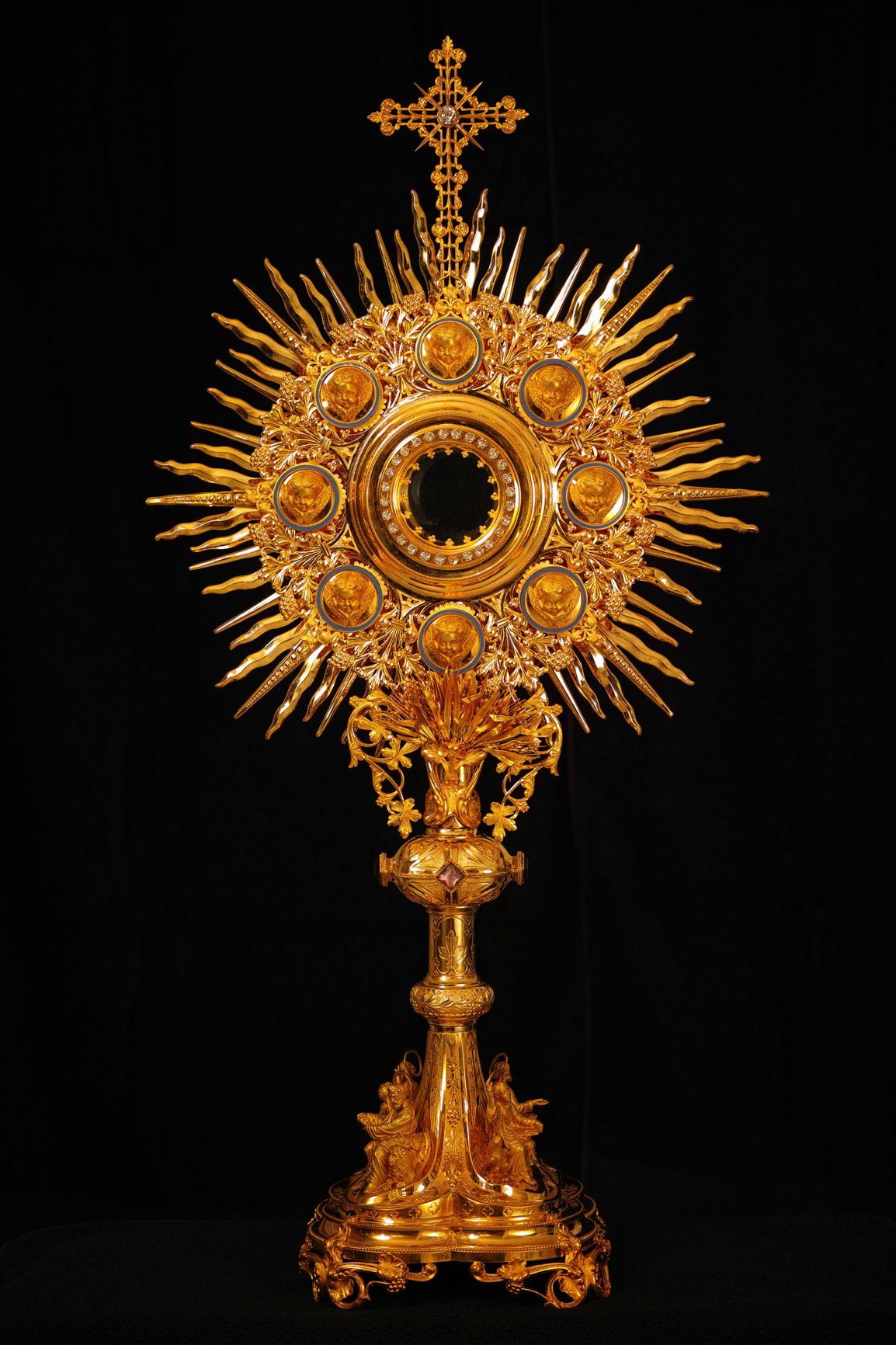
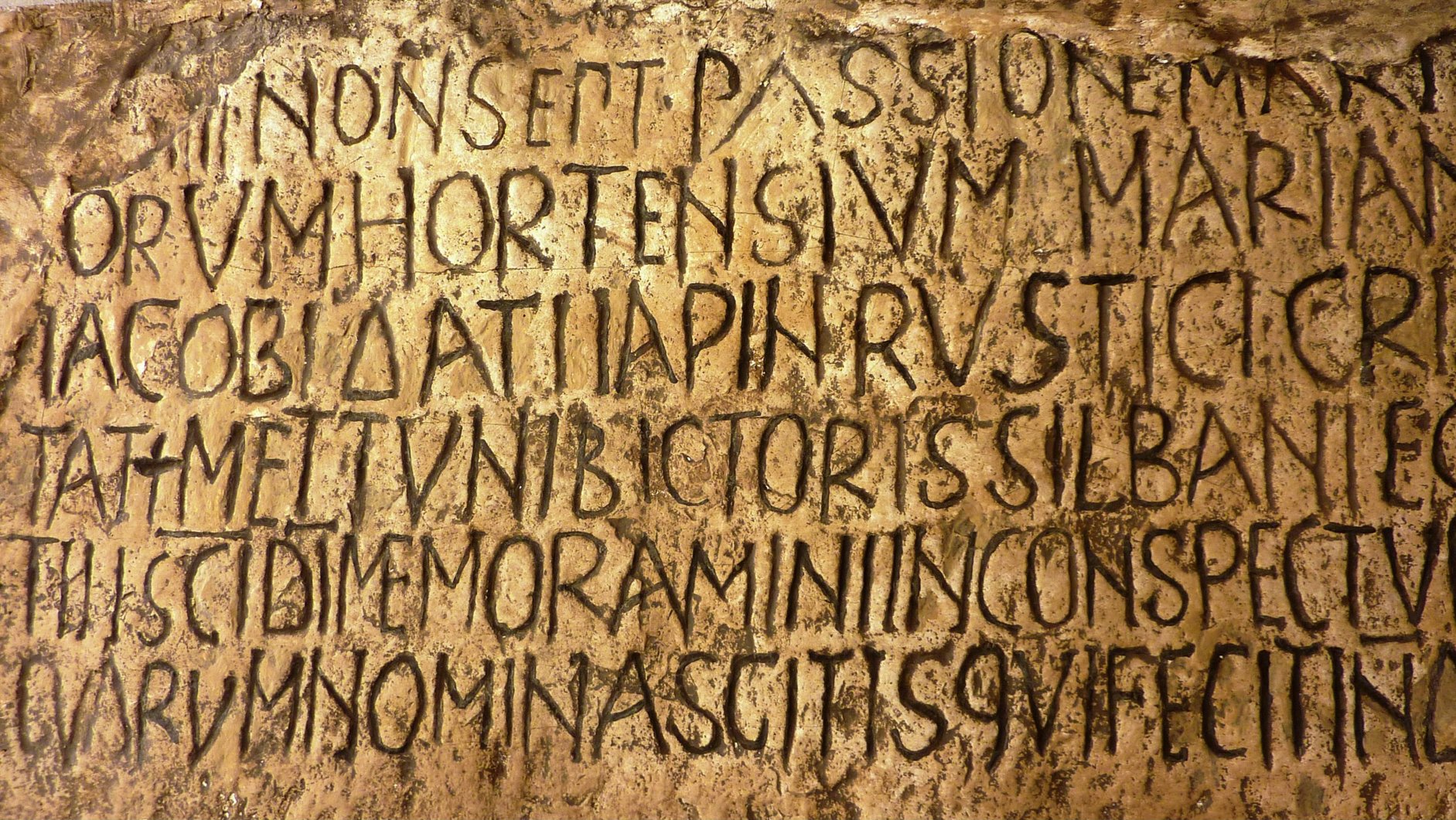
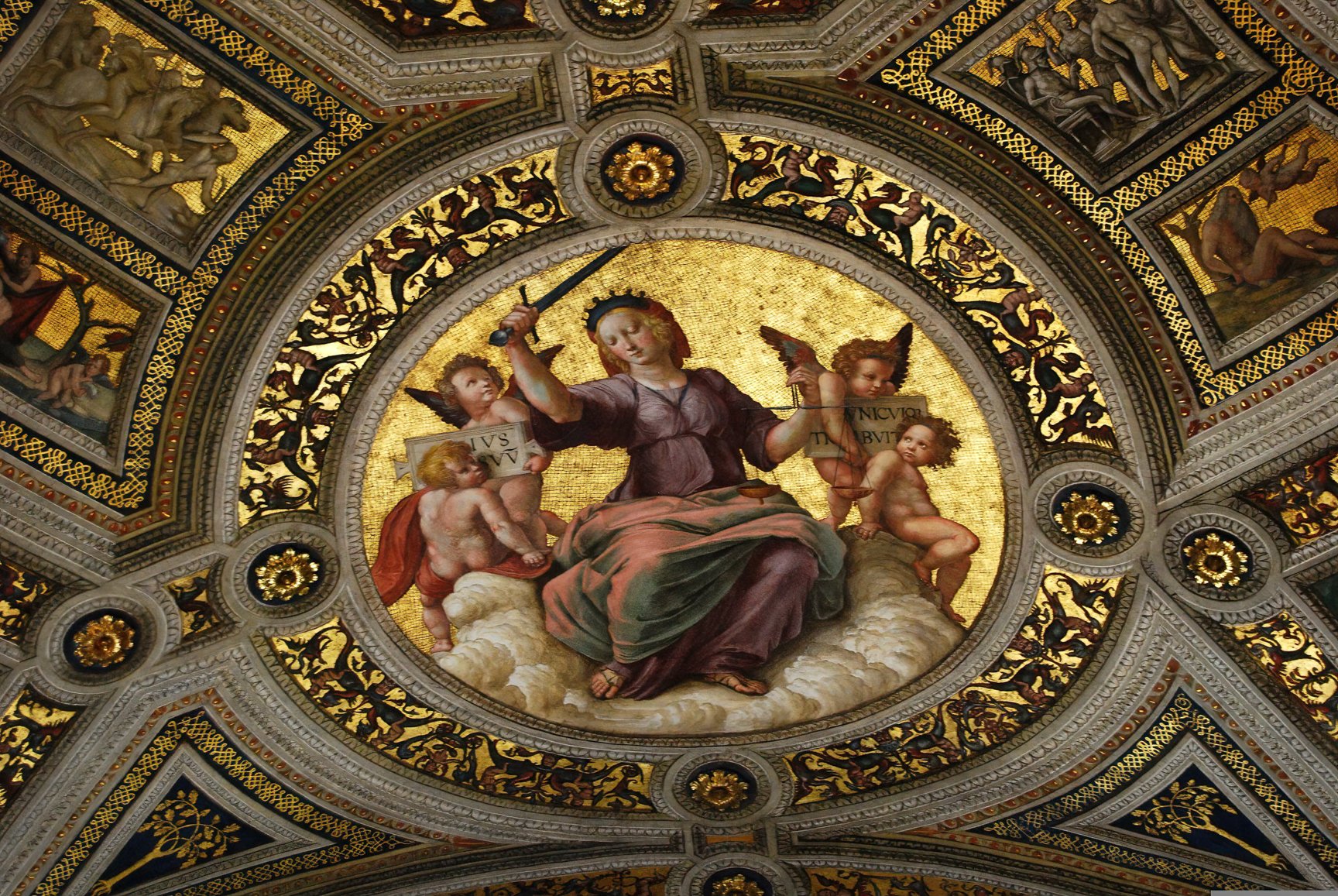
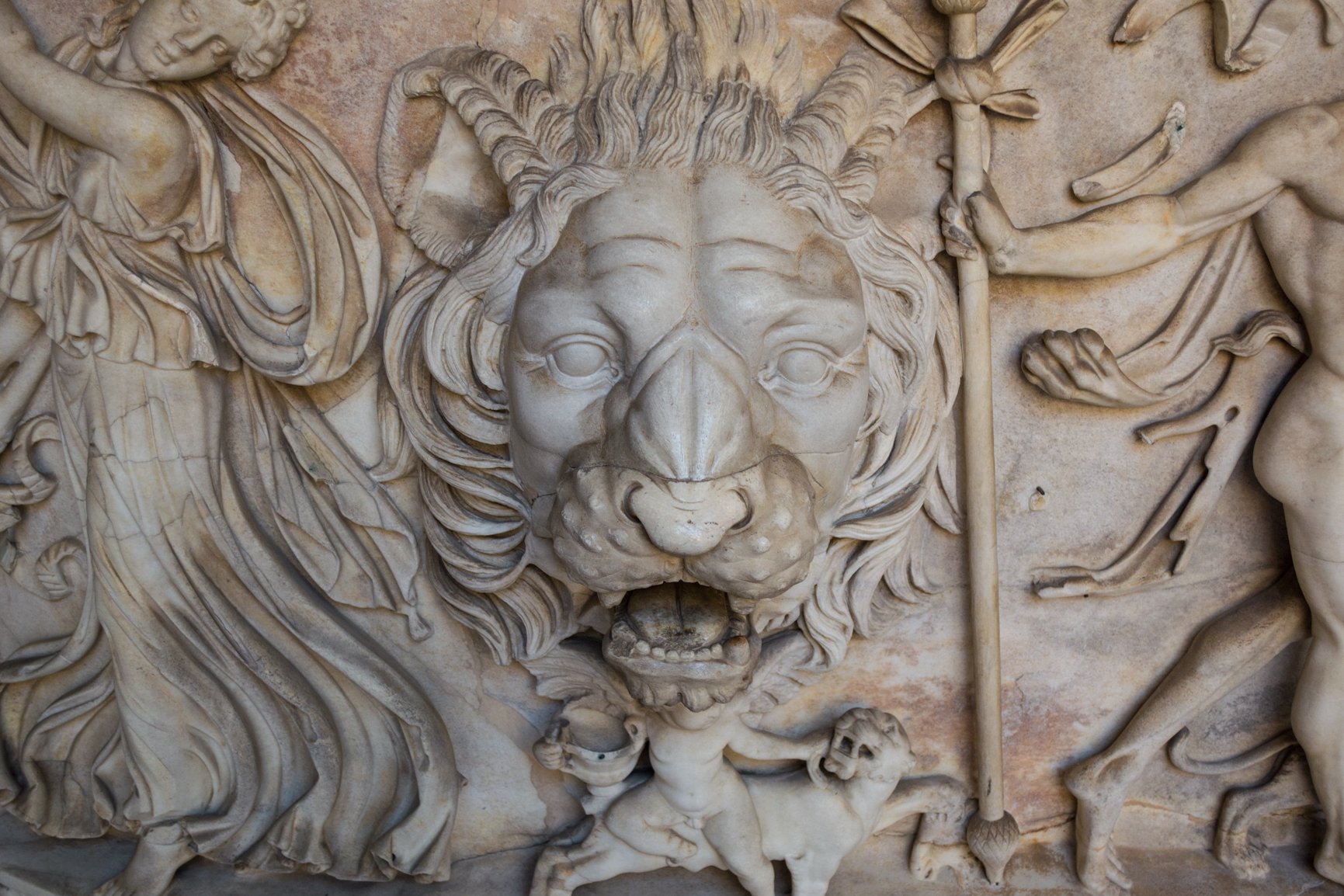
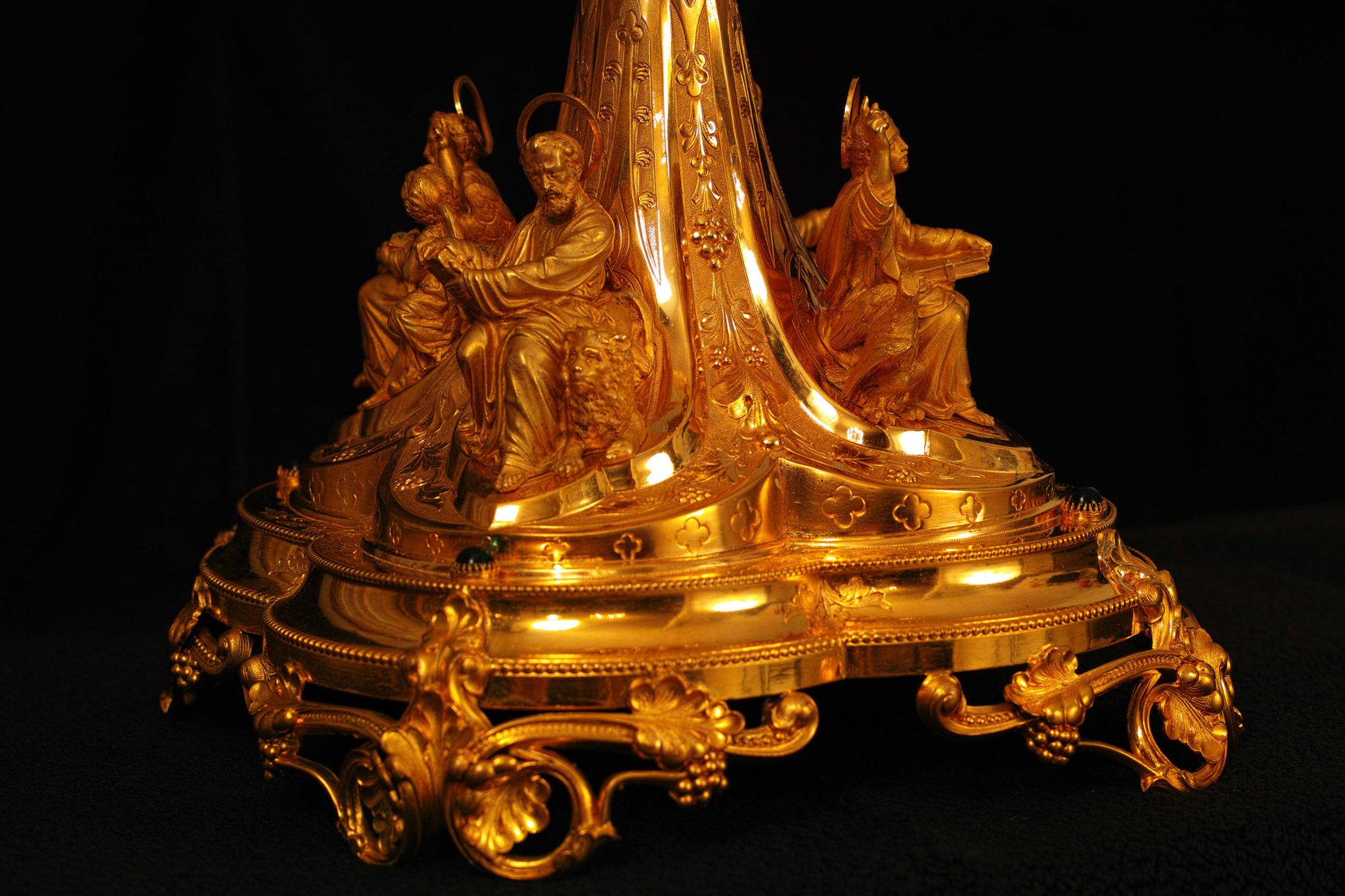
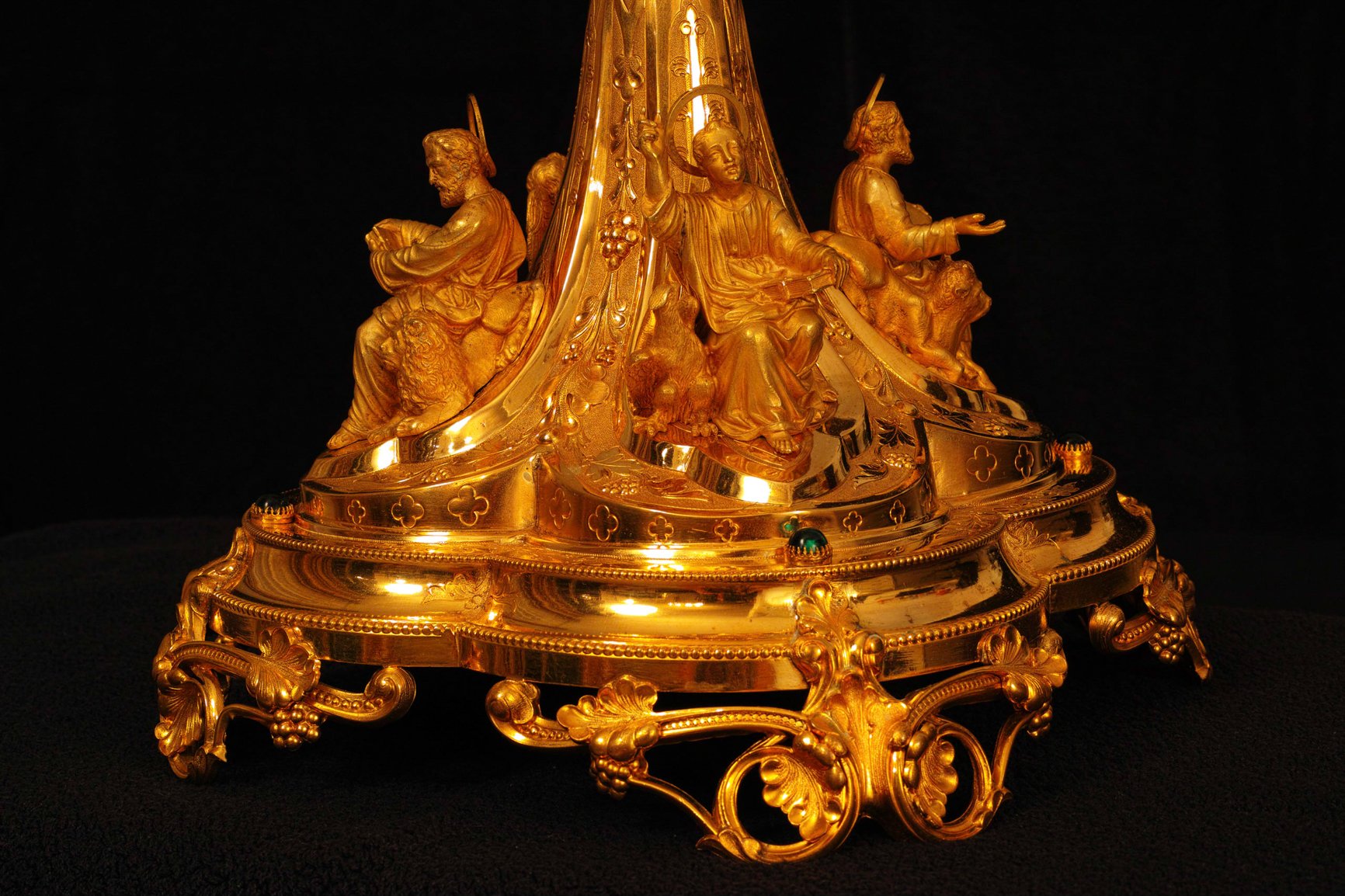
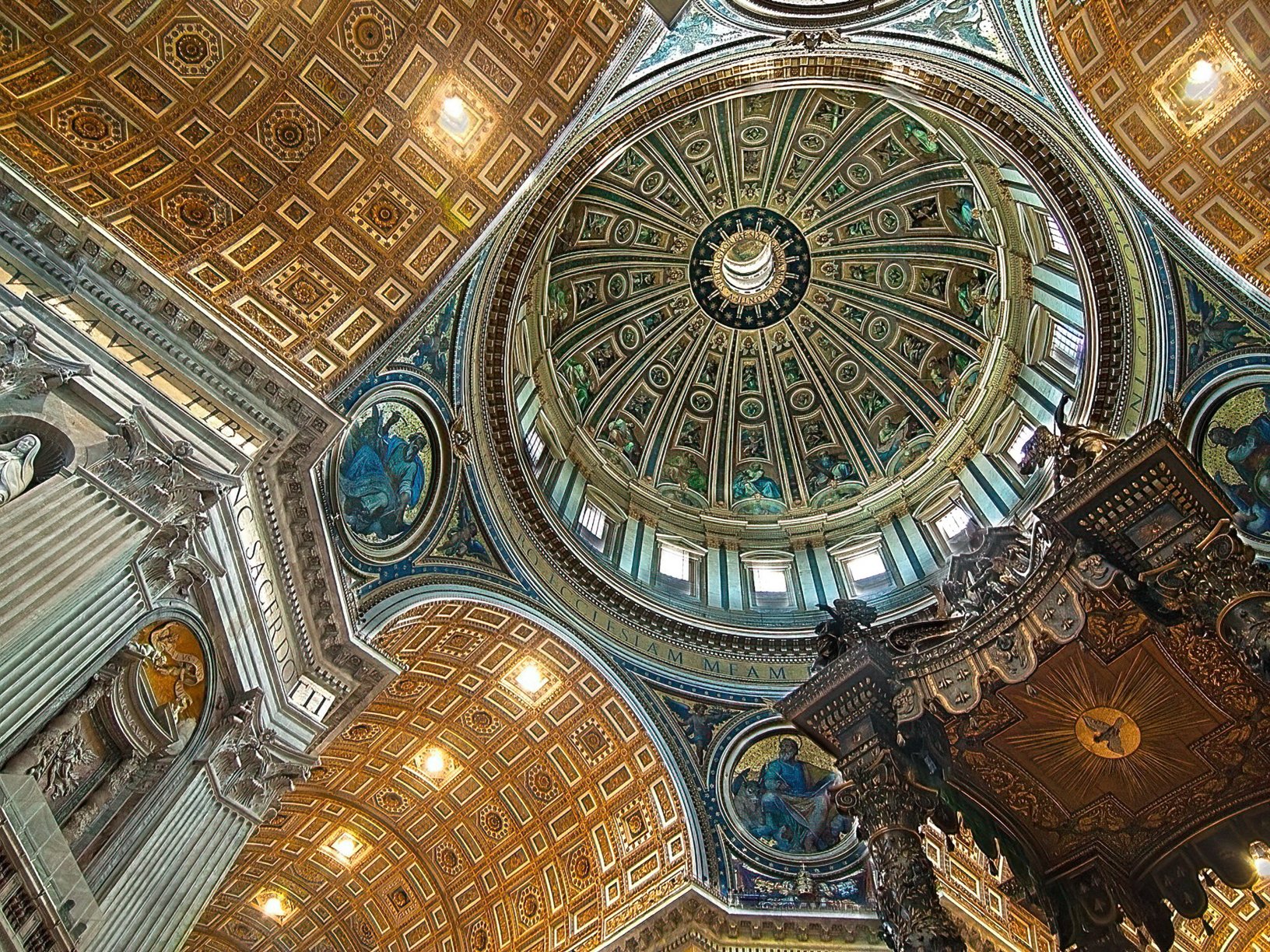
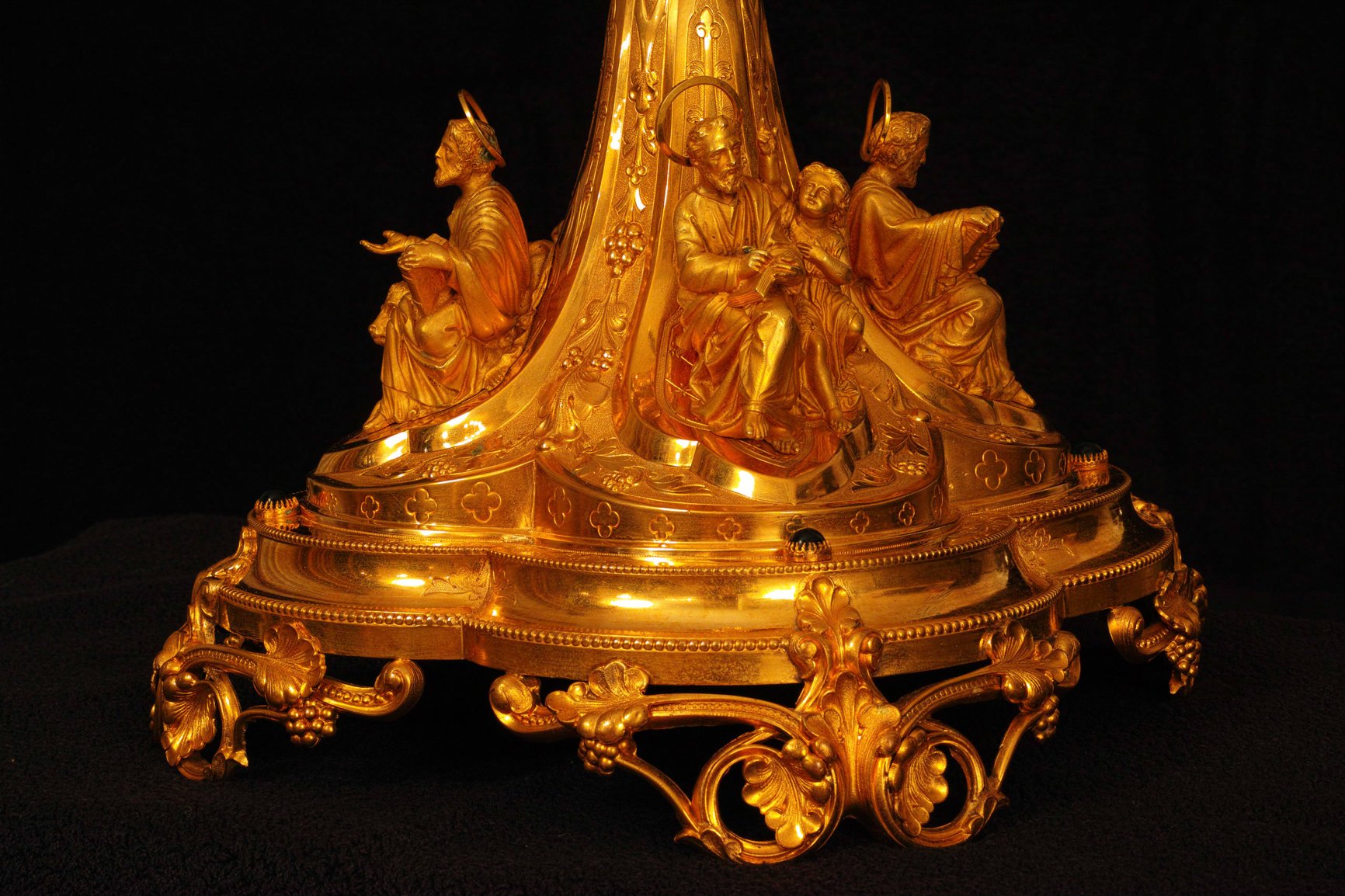

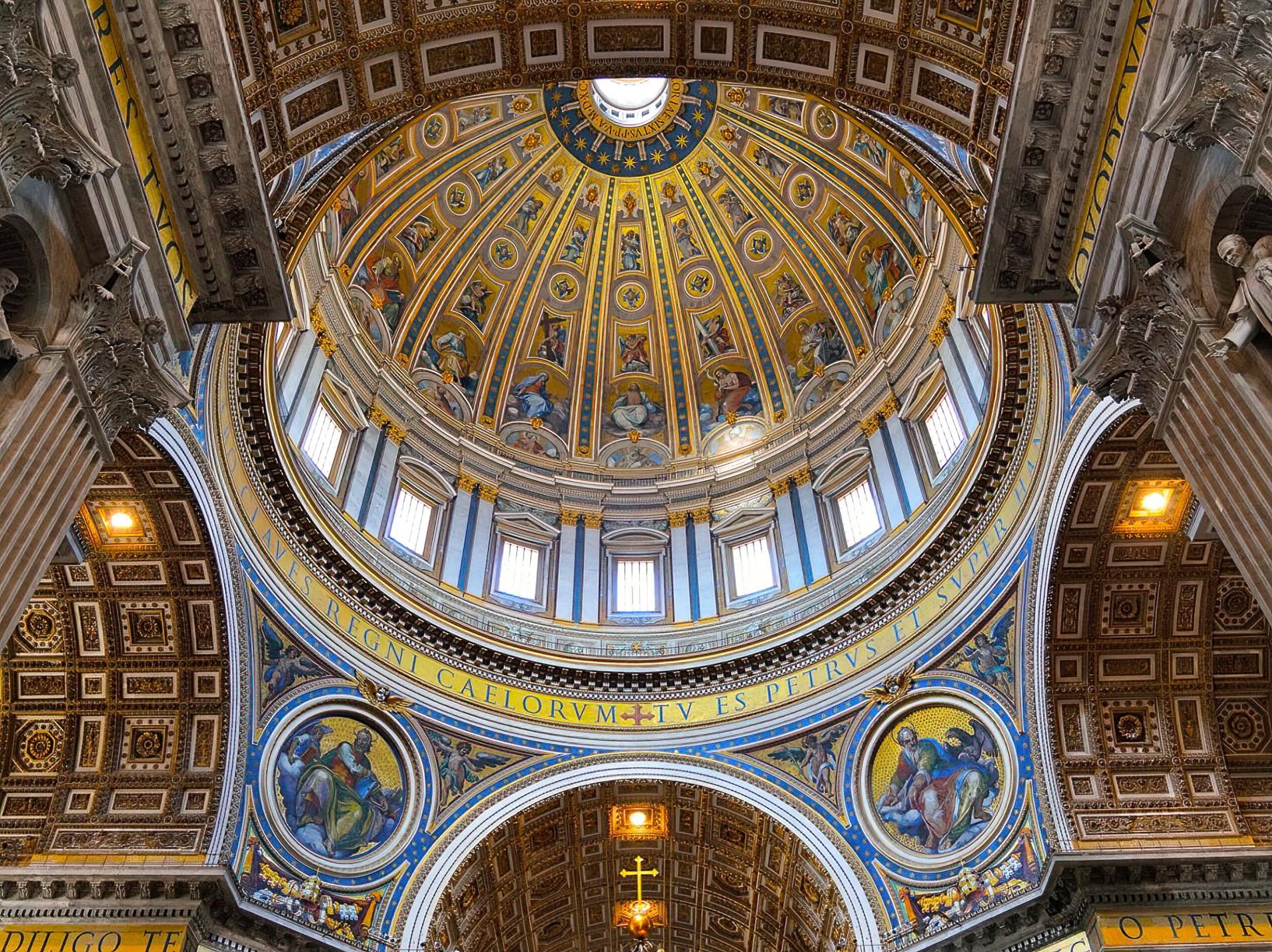

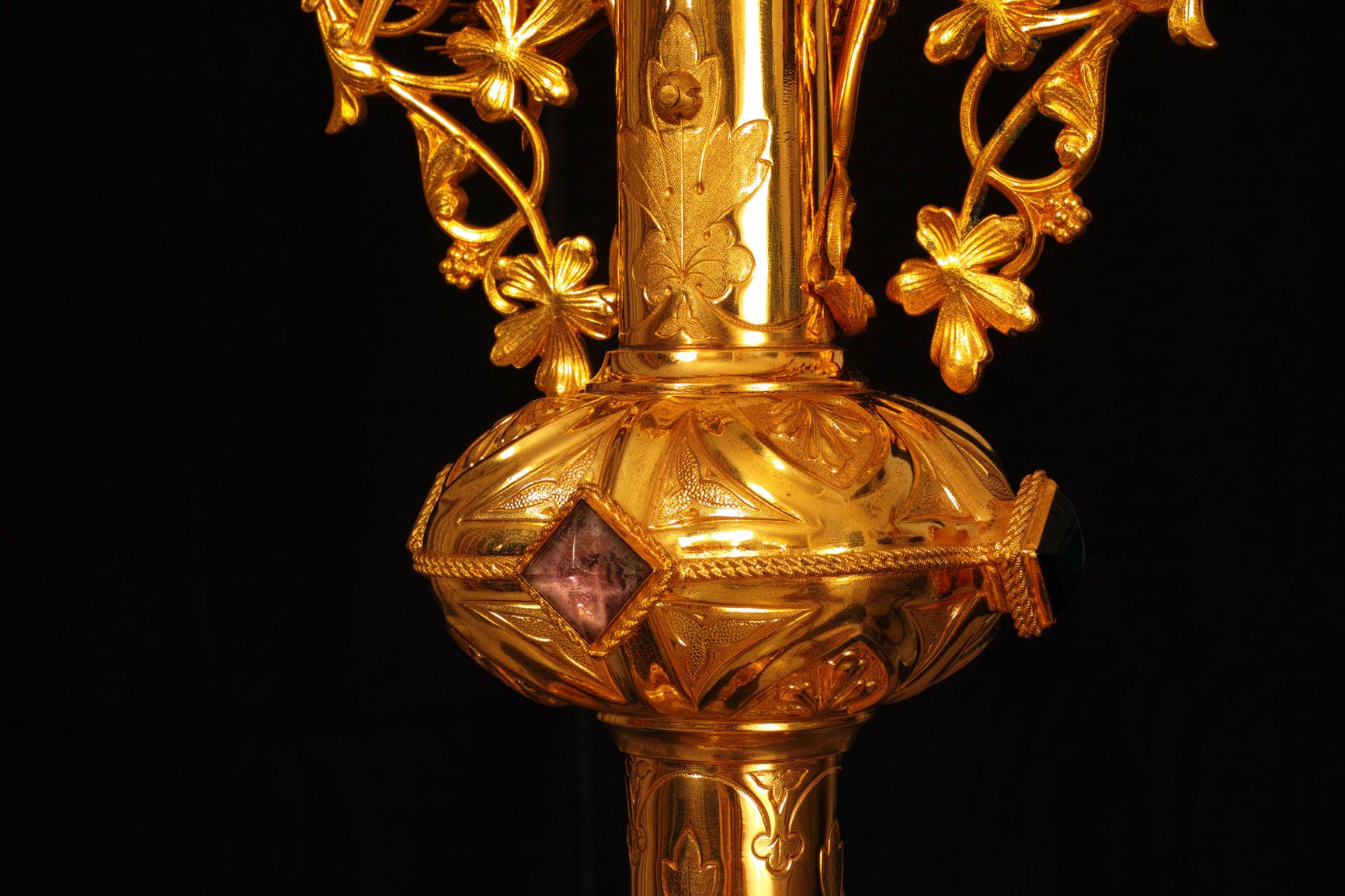
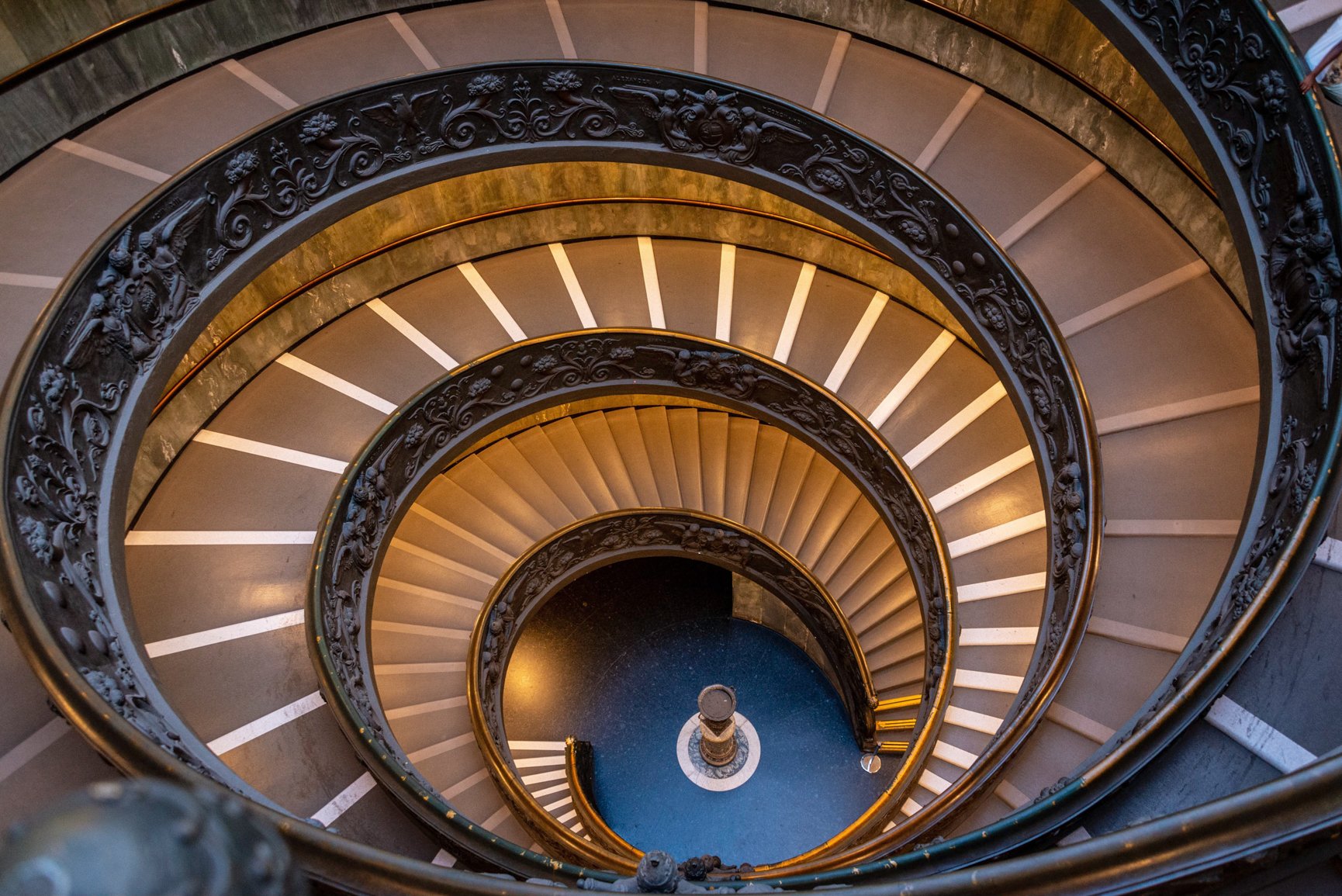
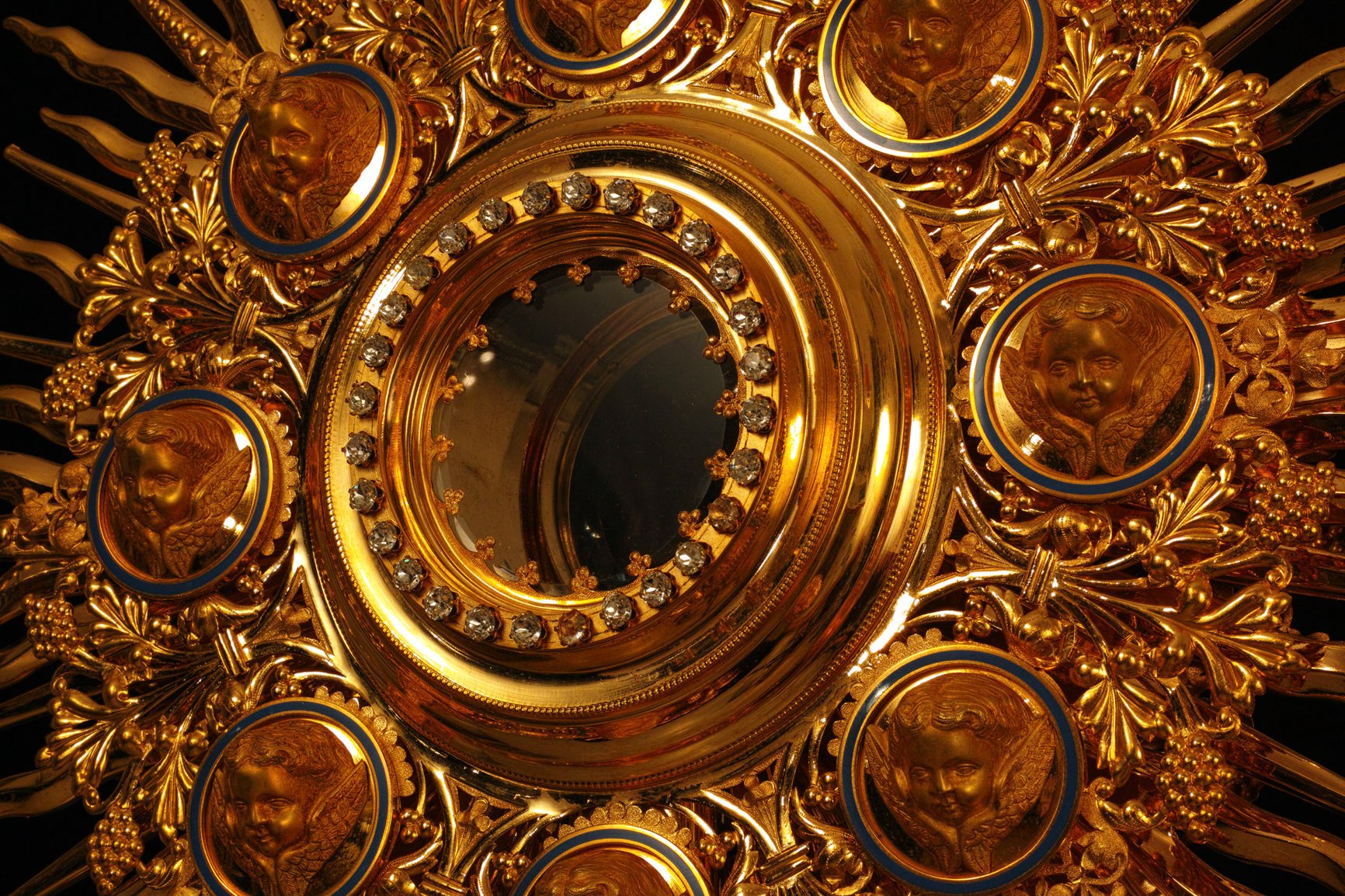
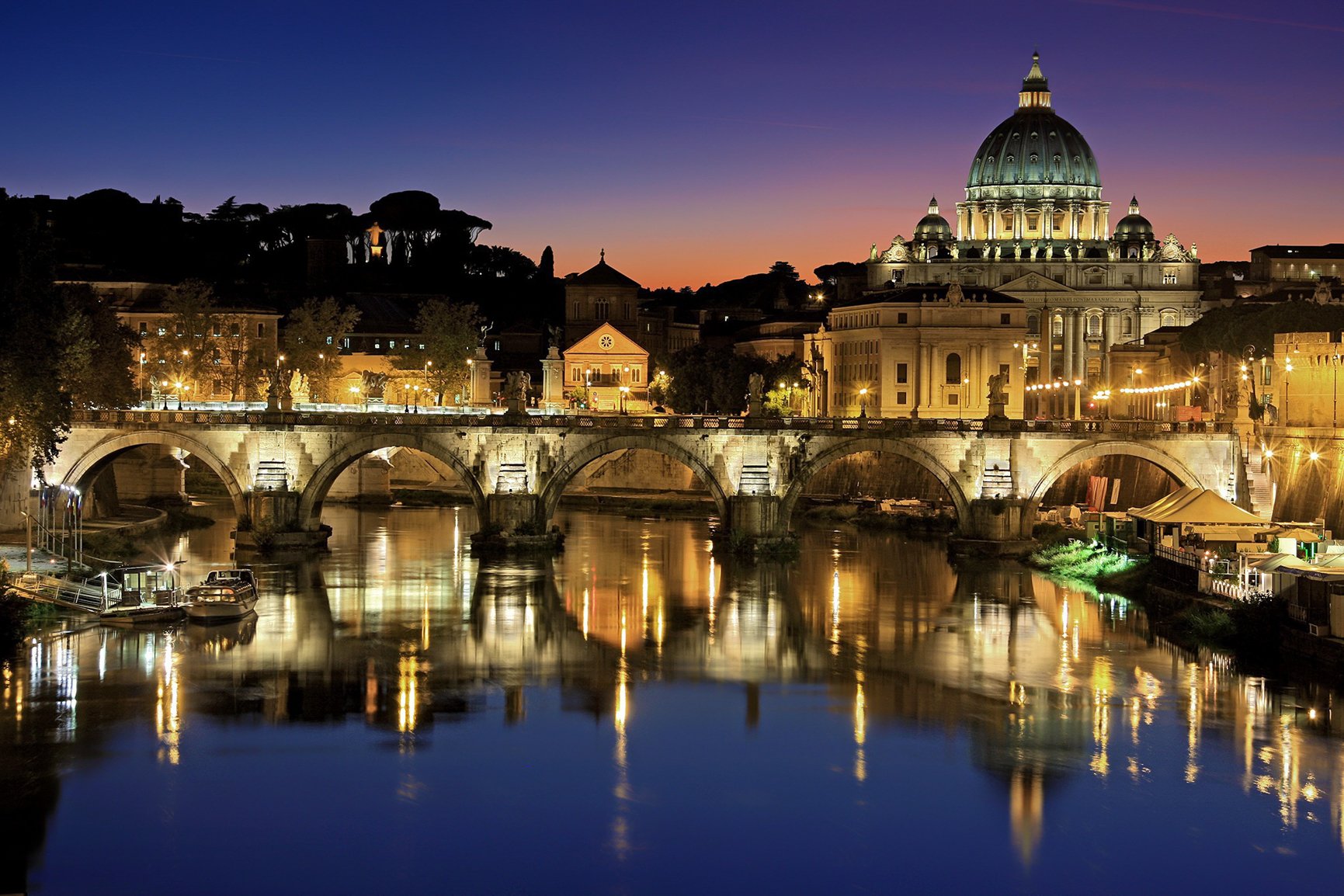
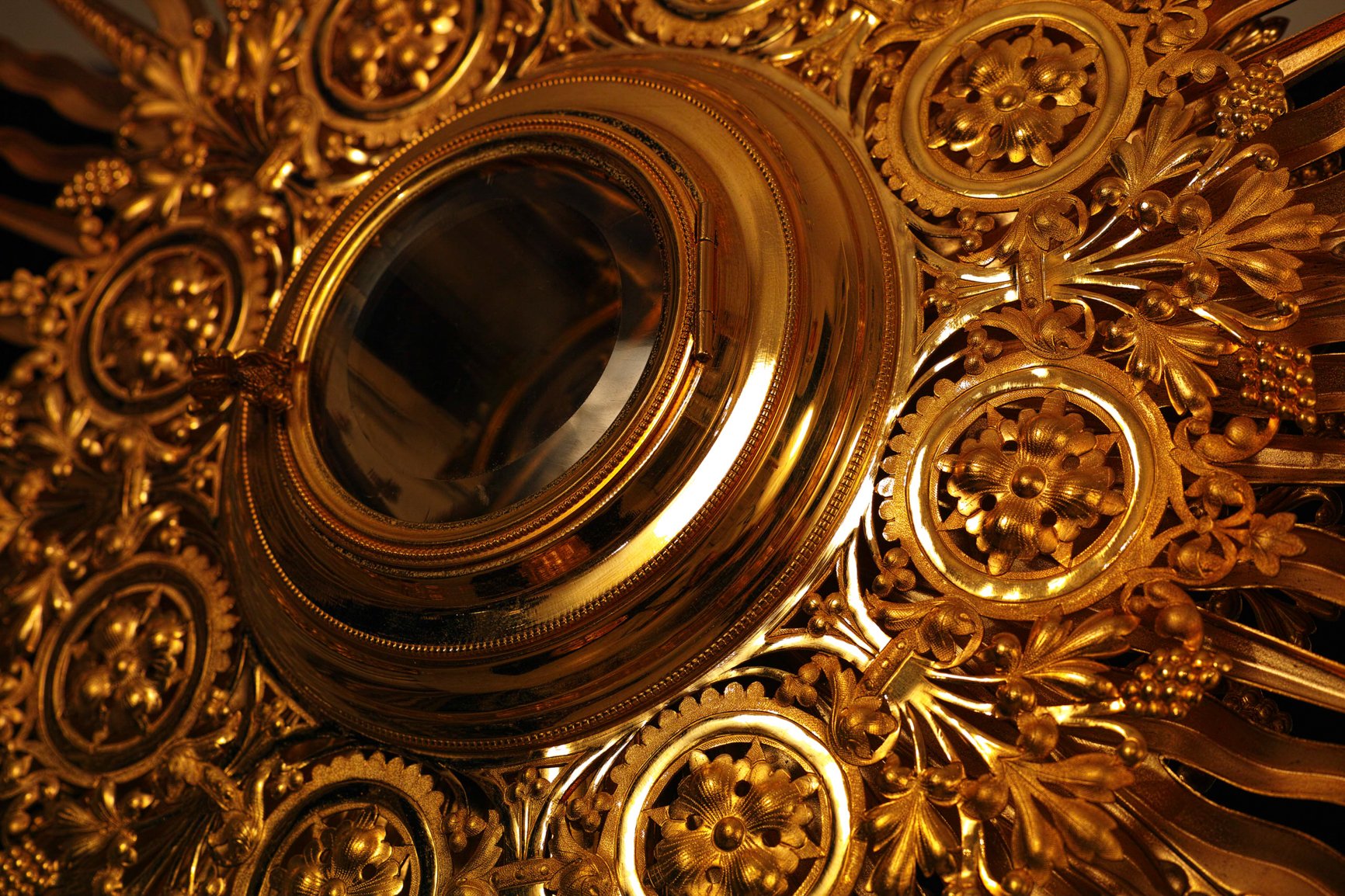

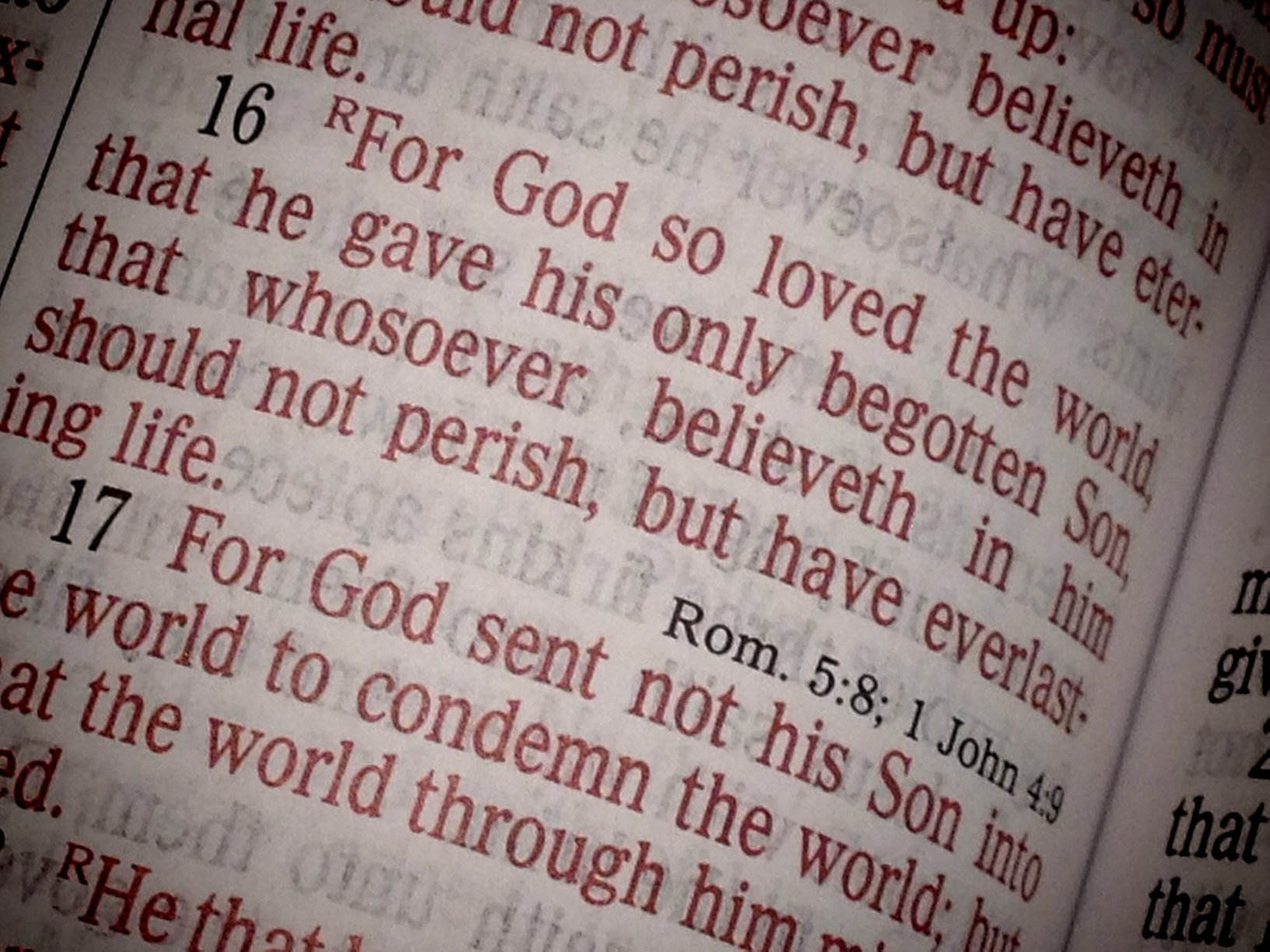

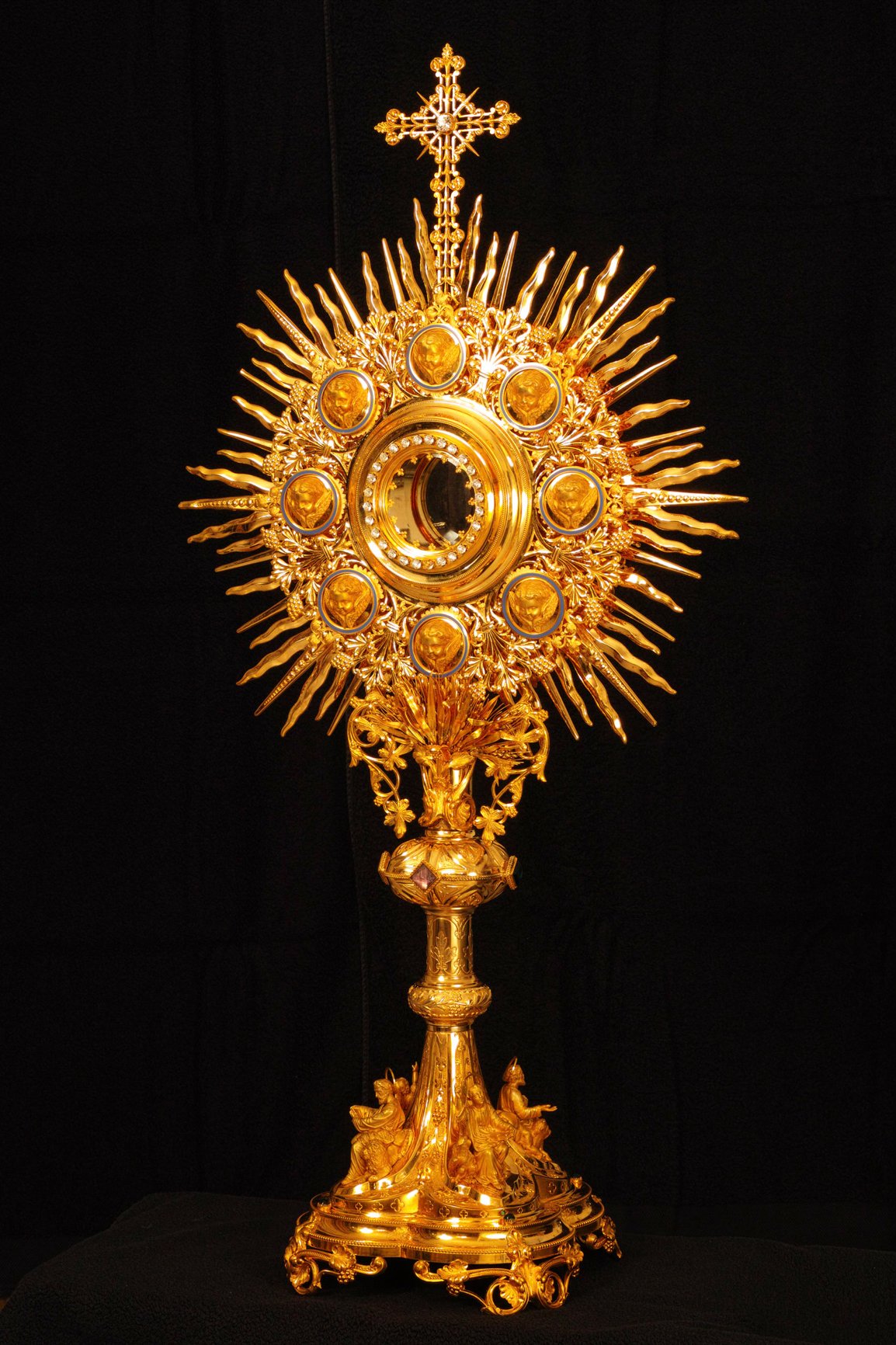
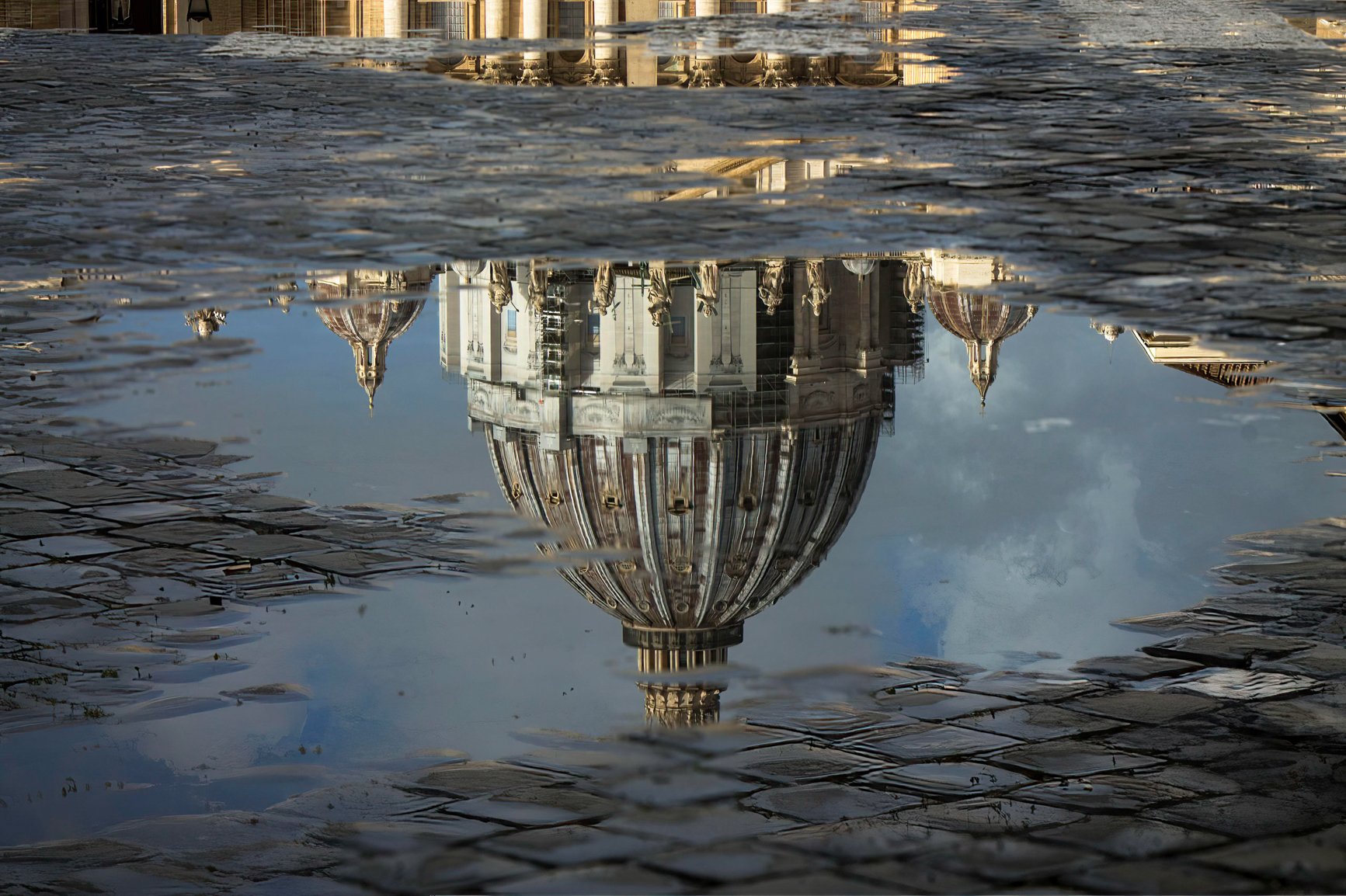
ART AS A SPACE FOR MEDITATION, A SANCTUARY FOR CONTEMPLATION
Behold Oracle 1, the inaugural piece among a series of seven, a marvellously crafted mixed-media sculptural installation that transcends time and tradition. This masterpiece comprises a resplendent mid-late 19th-century French neo-gothic style gilt metal monstrance, radiating an intricate and richly ornate sunburst design.
The focal point is the eye, housing a solid silver lunette encircled by diamond-like gemstones. A symphony of finely handcrafted filigree work adorns the center, featuring grapes, foliage, and cherubic heads set in blue enamel roundels. Embellishing the knob, four coloured cabochons lead to a harvest, symbolising God's boundless provision, hope, and salvation.
The quatrefoil base, a canvas of intricate artistry, showcases detailed statues of the Four Evangelists—Matthew, Mark, Luke, and John—revered authors of the canonical Gospels in Christian tradition. This monumental monstrance, standing at an impressive 102 cm tall by 52 cm wide, emanates beauty and dignity. A rare and unique creation, it bears the distinguished hallmark of the esteemed French silversmiths Jules Jamain and Eugene Chevron, active in Paris from 1865-1879.
In the realm of religious practice, a monstrance, also known as an ostensorium, serves as the sacred vessel within Roman Catholic, Old Catholic, and Anglican churches. It becomes a conduit for the reverent display of objects of piety, such as the consecrated Eucharistic host during moments of adoration or the Benediction of the Blessed Sacrament. Additionally, it transforms into a reliquary monstrance, showcasing relics of revered saints. The term 'monstrance' derives from the Latin word 'monstrare,' meaning 'to show,' while 'ostensorium' finds its roots in the Latin word 'ostendere,' signifying 'to exhibit.'"
The exquisite monstrance is currently available for purchase.
L'ART COMME ESPACE DE MÉDITATION, SANCTUAIRE DE CONTEMPLATION
Voici Oracle 1, la pièce inaugurale d'une série de sept, une merveilleuse installation sculpturale mixte qui transcende le temps et la tradition. Ce chef-d'œuvre se compose d'un ostensoir resplendissant en métal doré de style néo-gothique français du milieu du XIXe siècle, qui rayonne d'un motif complexe et richement orné de rayons de soleil.
Le point focal est l'œil, qui abrite une lunette en argent massif entourée de pierres précieuses semblables à des diamants. Une symphonie de filigranes finement travaillés à la main orne le centre, avec des raisins, des feuillages et des têtes de chérubins sertis dans des rondeaux d'émail bleu. Quatre cabochons colorés ornent le pommeau et mènent à une récolte, symbolisant la provision illimitée, l'espoir et le salut de Dieu.
La base quadrilobée, toile d'art complexe, présente des statues détaillées des quatre évangélistes - Matthieu, Marc, Luc et Jean - auteurs vénérés des Évangiles canoniques dans la tradition chrétienne. Cet ostensoir monumental, d'une hauteur impressionnante de 102 cm et d'une largeur de 52 cm, respire la beauté et la dignité. Création rare et unique, il porte le poinçon distingué des orfèvres français Jules Jamain et Eugène Chevron, actifs à Paris entre 1865 et 1879.
Dans le domaine de la pratique religieuse, l'ostensoir, également connu sous le nom d'ostensorium, sert de vase sacré dans les églises catholiques romaines, vieilles-catholiques et anglicanes. Il devient un conduit pour l'exposition révérencieuse d'objets de piété, tels que l'hostie eucharistique consacrée pendant les moments d'adoration ou la bénédiction du Saint-Sacrement. En outre, il se transforme en ostensoir reliquaire, où sont exposées les reliques de saints vénérés. Le terme « ostensoir » dérive du mot latin « monstrare », qui signifie « montrer », tandis que « ostensorium » trouve ses racines dans le mot latin « ostendere », qui signifie « exposer ».
Ce magnifique ostensoir est actuellement disponible à l'achat.
L'ARTE COME SPAZIO DI MEDITAZIONE, UN SANTUARIO PER LA CONTEMPLAZIONE
Ammirate Oracle 1, l'opera inaugurale di una serie di sette, una meravigliosa installazione scultorea a tecnica mista che trascende il tempo e la tradizione. Questo capolavoro è costituito da uno splendido ostensorio in metallo dorato in stile neogotico francese della metà del XIX secolo, che irradia un disegno a raggiera intricato e riccamente ornato.
Il punto focale è l'occhio, che ospita una lunetta in argento massiccio circondata da gemme simili a diamanti. Una sinfonia di filigrana finemente lavorata a mano adorna il centro, con uva, fogliame e teste di cherubini incastonate in tondi di smalto blu. Ad impreziosire il pomello, quattro cabochon colorati conducono a un raccolto, che simboleggia l'infinita disponibilità, la speranza e la salvezza di Dio.
Il basamento a quatre fogli, una tela di intricata maestria, mostra le statue dettagliate dei quattro evangelisti - Matteo, Marco, Luca e Giovanni - autori dei Vangeli canonici nella tradizione cristiana. Questo monumentale ostensorio, alto ben 102 cm e largo 52 cm, emana bellezza e dignità. Creazione rara e unica, porta il marchio di fabbrica degli stimati argentieri francesi Jules Jamain e Eugene Chevron, attivi a Parigi dal 1865 al 1879.
Nell'ambito della pratica religiosa, l'ostensorio, noto anche come ostensorio, funge da contenitore sacro nelle chiese cattoliche, cattoliche antiche e anglicane. Diventa un canale per l'esposizione riverente di oggetti di pietà, come l'ostia eucaristica consacrata durante i momenti di adorazione o la benedizione del Santissimo Sacramento. Inoltre, si trasforma in un ostensorio reliquiario per esporre le reliquie di santi venerati. Il termine 'ostensorio' deriva dalla parola latina 'monstrare', che significa 'mostrare', mentre 'ostensorium' trova le sue radici nella parola latina 'ostendere', che significa 'esporre'".
Il pregiato ostensorio è attualmente disponibile all'acquisto.
